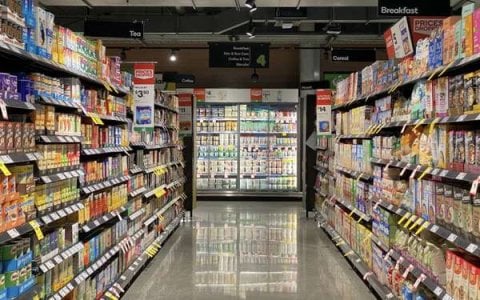How to get FREE items at Coles, Woolworths and ALDI with this scanning 'loophole'
- Replies 42
Members, have you ever got to the checkout and found that the scanned price of an item is different from the one displayed on the shelf?
Well, we have just discovered a little-known retail 'loophole' that can get you some items for FREE at Coles, Woolworths, and ALDI under certain conditions. Intrigued? Let us dive right in!
This information was brought to our attention by a clever shopper named Jarrod, who used to work in a supermarket. He explained to us The Scanning Code of Practice, a voluntary policy that Coles, Woolworths, ALDI, and, to some extent, IGA have adopted.
To break it down for you, Jarrod explained, 'Let's say the ticket on the shelf says $10, you get it to the counter, and it scans at $12. You get that item for FREE.'
Although there was doubt and scepticism regarding this revelation, Jarrod stood by his words, confirming his claim with open-source information from supermarket websites and a government site.
Here's what you need to know: if multiple units of a product scan at a higher price, only the first one is free, while the rest will be sold at the lower display price. Moreover, retailers only apply the policy on products up to a particular price.
And here's a real-life situation to illustrate this point: In a recent article, a shopper encountered a similar case. She purchased some chicken portions from Coles, which were originally priced at $12 but had been marked down to $9.50. However, when she reached the checkout counter, she was surprised that she was charged the full price instead of the discounted amount.
Frustrated, the customer had to discuss with the Coles cashier to rectify the situation. After some back-and-forth, she managed to secure the chicken portions for free, thanks to The Scanning Code of Practice.
Now, you might be wondering how often pricing errors like these occur. While we couldn't find any concrete statistics, we do know that mistakes happen, and with thousands of products in a supermarket, pricing errors could be more common than we think.
Coles and Woolworths have shared their respective policies on their websites. Coles stated, 'All Coles supermarkets apply 'Our Promise on Price Scanning' to ensure confidence in the pricing accuracy at our registers. If a single item scans at a higher price than the advertised or ticketed shelf price for that item, we will give the customer that item free.'
In Woolworths' case, their Scanning Code of Practice applies to all scanned merchandise, including items that are registered using a PLU number (Price Look-up Number). The code does not cover liquor and tobacco products, items with a shelf price of $50 or higher, errors in unit pricing on shelf labels, or checkout operator errors.
ALDI's help site also acknowledges this policy: 'If a regular product scans at a price higher than that displayed, you are entitled to receive the first item free. All subsequent items will be charged at the lower price.'

IGA's stand on the issue may vary, as their Scanning Code of Practice is optional for independent retailers. It's always best to check with your local IGA store should you ever be caught in this situation.
If you ever come across a scanning discrepancy at the supermarket, don't fret! We've got a simple guide to help you navigate the situation smoothly. Just follow these steps:

This handy tip serves as a reminder to stay vigilant and double-check the scanned prices of our purchases. After all, retail mistakes happen, and we need to make sure we're not overpaying for our weekly groceries!
So, next time you're at the checkout counter, keep an eye on the scanned prices. You never know—you might just end up with a free item or two! Do you have other supermarket tips and tricks to share? Let us know in the comments!
Well, we have just discovered a little-known retail 'loophole' that can get you some items for FREE at Coles, Woolworths, and ALDI under certain conditions. Intrigued? Let us dive right in!
This information was brought to our attention by a clever shopper named Jarrod, who used to work in a supermarket. He explained to us The Scanning Code of Practice, a voluntary policy that Coles, Woolworths, ALDI, and, to some extent, IGA have adopted.
To break it down for you, Jarrod explained, 'Let's say the ticket on the shelf says $10, you get it to the counter, and it scans at $12. You get that item for FREE.'
Although there was doubt and scepticism regarding this revelation, Jarrod stood by his words, confirming his claim with open-source information from supermarket websites and a government site.
Here's what you need to know: if multiple units of a product scan at a higher price, only the first one is free, while the rest will be sold at the lower display price. Moreover, retailers only apply the policy on products up to a particular price.
And here's a real-life situation to illustrate this point: In a recent article, a shopper encountered a similar case. She purchased some chicken portions from Coles, which were originally priced at $12 but had been marked down to $9.50. However, when she reached the checkout counter, she was surprised that she was charged the full price instead of the discounted amount.
Frustrated, the customer had to discuss with the Coles cashier to rectify the situation. After some back-and-forth, she managed to secure the chicken portions for free, thanks to The Scanning Code of Practice.
Now, you might be wondering how often pricing errors like these occur. While we couldn't find any concrete statistics, we do know that mistakes happen, and with thousands of products in a supermarket, pricing errors could be more common than we think.
Coles and Woolworths have shared their respective policies on their websites. Coles stated, 'All Coles supermarkets apply 'Our Promise on Price Scanning' to ensure confidence in the pricing accuracy at our registers. If a single item scans at a higher price than the advertised or ticketed shelf price for that item, we will give the customer that item free.'
In Woolworths' case, their Scanning Code of Practice applies to all scanned merchandise, including items that are registered using a PLU number (Price Look-up Number). The code does not cover liquor and tobacco products, items with a shelf price of $50 or higher, errors in unit pricing on shelf labels, or checkout operator errors.
ALDI's help site also acknowledges this policy: 'If a regular product scans at a price higher than that displayed, you are entitled to receive the first item free. All subsequent items will be charged at the lower price.'

Australia's biggest supermarkets follow a code that every shopper should know about. Credit: Unsplash/Franki Chamaki.
IGA's stand on the issue may vary, as their Scanning Code of Practice is optional for independent retailers. It's always best to check with your local IGA store should you ever be caught in this situation.
If you ever come across a scanning discrepancy at the supermarket, don't fret! We've got a simple guide to help you navigate the situation smoothly. Just follow these steps:
- Take a moment to double-check the price on the shelf and the price displayed on the scanner.
- Inform the cashier or a customer service representative about the discrepancy you've noticed.
- Make sure to provide them with the correct price displayed on the shelf, and kindly ask them to verify it.
- Following the supermarket's policy, politely request either a free item or a price adjustment.
Key Takeaways
- A shopper revealed a retail 'loophole' that allows customers to get certain products for free if the scanning price is higher than the displayed price in the supermarket.
- The Scanning Code of Practice is a voluntary policy signed up to and followed by Coles, Woolworths, ALDI, and some IGA stores in Australia.
- The shopper’s claims were met with scepticism, but a Coles spokesperson confirmed the policy, stating that they apply 'Our Promise on Price Scanning' to ensure pricing accuracy at the registers.
- Woolworths and ALDI also have information about the Scanning Code of Practice on their websites, outlining the conditions and items that either qualify or are exempt from the policy.
This handy tip serves as a reminder to stay vigilant and double-check the scanned prices of our purchases. After all, retail mistakes happen, and we need to make sure we're not overpaying for our weekly groceries!
So, next time you're at the checkout counter, keep an eye on the scanned prices. You never know—you might just end up with a free item or two! Do you have other supermarket tips and tricks to share? Let us know in the comments!







